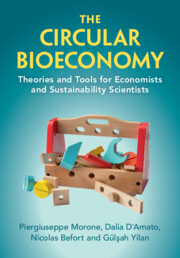Part II
Published online by Cambridge University Press: 26 October 2023
Summary

- Type
- Chapter
- Information
- The Circular BioeconomyTheories and Tools for Economists and Sustainability Scientists, pp. 57 - 122Publisher: Cambridge University PressPrint publication year: 2023



